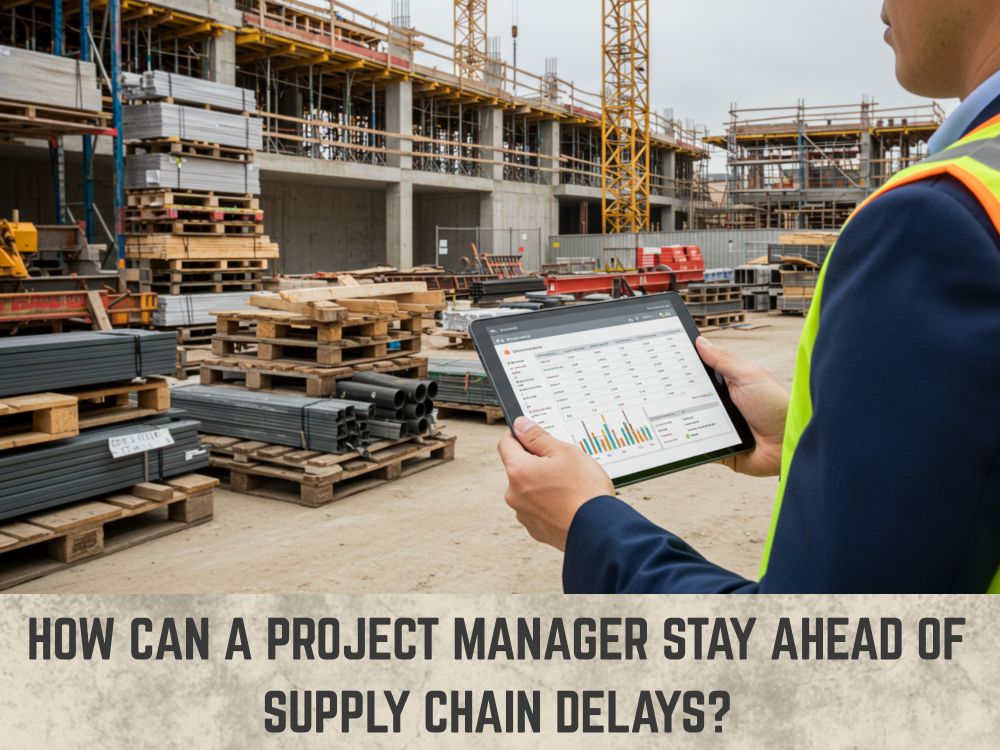Supply chain delays are one of the most significant and unpredictable threats to a construction project’s timeline and budget. A single missing component can bring a multi-million-dollar project to a halt, costing a general contractor time, money, and reputation. In today’s complex global economy, a project manager’s ability to stay ahead of these delays is a critical skill that separates success from failure. It requires a proactive, multi-faceted strategy that combines planning, technology, and robust communication.
Proactive Planning and Sourcing
The best way to handle a delay is to prevent it from happening in the first place. This starts long before the first shovel hits the dirt.
-
Plan for Contingencies
Don’t assume a smooth ride. During the project’s planning phase, identify the most critical and high-risk materials—long-lead items, specialized equipment, or custom-fabricated components. For these items, develop a contingency plan. This might involve identifying a secondary supplier, stocking a small amount of the material on-site, or building extra time into the schedule.
-
Diversify Your Supply Chain 🌐
Relying on a single supplier, especially for a crucial material, is a major risk. A fire at one factory, a natural disaster, or a transportation bottleneck can completely derail your project. Instead, diversify your supply chain by building relationships with multiple vendors. This allows you to pivot quickly if one supplier experiences an issue.
-
Purchase Early
Whenever possible, purchase and secure long-lead items well in advance. While it may seem counterintuitive to buy materials you won’t need for months, it’s a form of risk mitigation. A dedicated, off-site storage solution can protect these materials and ensure they are ready to go when you need them.
Leveraging Technology for Visibility
Manual tracking of materials is inefficient and prone to error. Modern technology provides the visibility and data you need to spot potential delays before they impact your site.
-
Implement a Material Tracking System 💻
Use project management software with a robust material tracking feature. This allows you to monitor the status of every order in real time. You can track when an order is placed, shipped, and received, providing an early warning system if a shipment is running late.
-
Use Predictive Analytics
Some advanced project management platforms use predictive analytics to forecast potential supply chain issues. By analyzing historical data, market trends, and even weather patterns, these systems can alert you to a potential risk, such as a material shortage, months in advance.
-
Integrate with Your Suppliers
Ask your major suppliers if they have an API or a portal that allows you to directly track the status of your orders. This real-time integration can save you from constantly calling and emailing for updates.
The Power of Communication and Relationships
Information is your most powerful asset in a supply chain crisis. Building strong relationships and fostering open communication can provide you with the early warnings you need.
-
Build Strong Supplier Relationships 🤝
Don’t view your suppliers as just a transaction. Build a partnership. A good relationship can lead to a supplier giving you a heads-up about a potential delay before they inform anyone else, or helping you source a hard-to-find item in a pinch.
-
Communicate with Subcontractors
Your subcontractors are on the front lines and often have valuable insights. They know which suppliers are reliable, which materials are difficult to source, and what the lead times are for their specialized equipment. Maintain open lines of communication to leverage their expertise.
-
Regular Check-ins
Implement a regular schedule for checking in on the status of all your material orders. This shouldn’t be a one-time thing. Make it a weekly or even a daily ritual for your team to confirm that all materials are on track for their scheduled delivery. This consistent oversight prevents a small problem from becoming a project-halting crisis.
By combining proactive planning, leveraging technology, and prioritizing communication, a project manager can transform the vulnerability of supply chain issues into an opportunity to demonstrate expertise and deliver a project on time and on budget.




